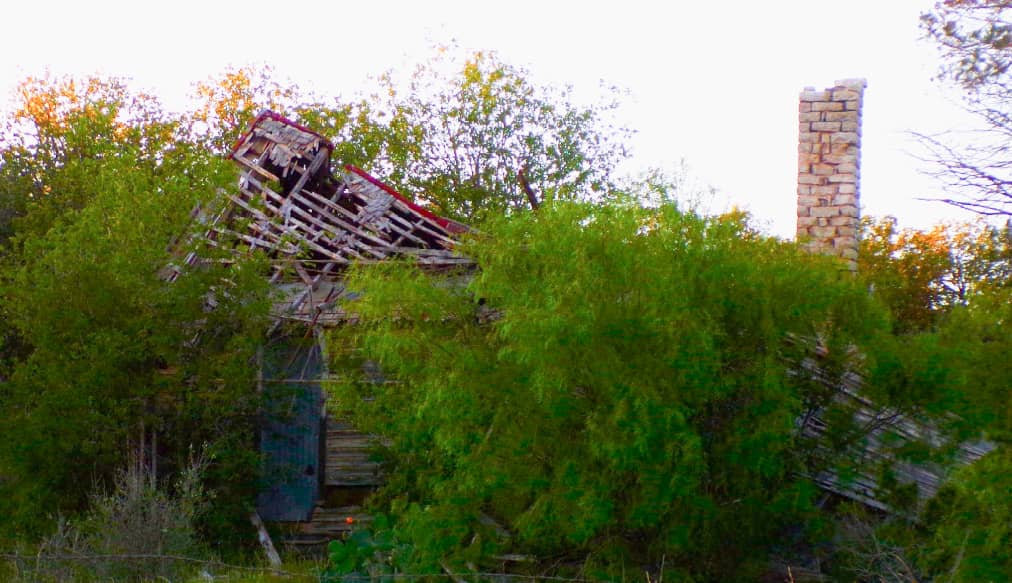
I have a long-standing affair with old houses. From those that look like they were just suddenly left, with windows and doors still intact, to broken up piles of wood and even simple depressions in the ground with nothing else remaining, I like them all. In our back road drives, my husband and I see a lot of them, and the fascination doesn’t dim.
An abandoned home gives me a delicious sense of nostalgia and wonder mixed together. They are full of stories. I like to imagine who might have lived there, to look at the old steps on a front porch and think how many people must have gone up and down them. Parents and grandparents, children and their neighborhood friends would once have enlivened a now silent ruin. Old dogs would have lain on the porch, catching the morning sun. Love, pain, joy and loss–all the ups and downs of all human existence were once held within those now crumbled walls.
Over the years, I’ve found a few tricks for spotting old home sites that seem to work. They are usually on higher ground, not down beside a creek or river, but on an upward rise, yet still frequently nearby to a water source. If there is nothing left of an old home, there still might be signs. An old rock or brick chimney is liable to still be around. Bushes and flowers that are not native, growing in patches, are a good sign someone might have planted them for their yard. Once I found a site by noticing several lonely crape myrtle trees growing in an otherwise empty pasture. Groups of other trees like pecan and live oak that are native but older and look planted in something like a square that might once have been used for shade and windshields are also a clue. Clusters of outbuildings can show where a demolished house once stood. Once I find what I think is an old site, I watch for more signs that can confirm and enlarge the picture.
Depressions or even deeply carved tracks in the ground that could have been a driveway, old lines of rock that were once a fence–these are evidence you can spot out driving around. Finding an old home site is like treasure hunting, but this treasure is in your own mind.
Sometimes it looks like a family just walked away, with the door left open, belongings still strewn around the yard. This I always imagine was a tragedy. An eviction or some other disaster caught these people unaware, unable to collect even their most valuable belongings. Other times an old house has been carefully sealed up, maybe the same family has owned that land for a few generations and has taken time to keep up the old house because it’s meaningful to them.
I like to see the sunset light glint off the windows of an empty house. I like to think about the people who have come and gone, imagine how they lived, how they went to get to school or town. There’s something about the rhythm of life and death there, in the abandonment of an old house, that makes me think of how life moves in those same sorts of waves for all of us. Building something new, leaving it, coming home to it, then forgetting–those things have been, will be, and are now. The things that happen to an old home happen to us as well. It’s almost musical, this sense of progression we’re involved in, that old houses somehow depict.
While we are here, it seems our ways and times are the only ones, but surely those who were here before thought the same way. Time passes on, the world changes, people think and act differently than they once did. When the setting sun glints off the empty window of some long forgotten home in the middle of nowhere, I get this sense of continuation. We are building on what was built before, rising and falling in the same ways, still deeply connected to it. It’s like we’re all writing parts to some great symphony that we have yet to hear in full.
***
Diane Adams is a local journalist whose columns appear Thursdays on BrownwoodNews.com
